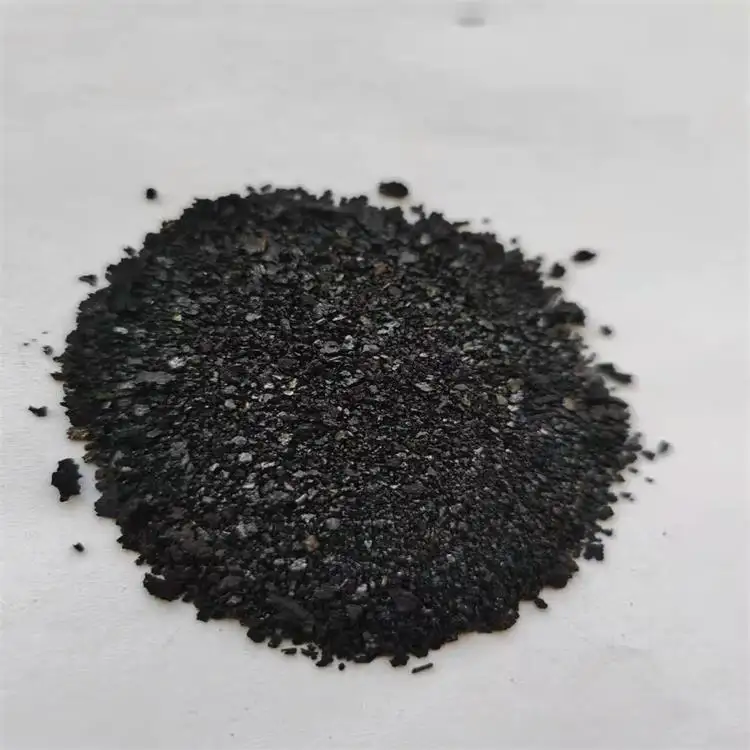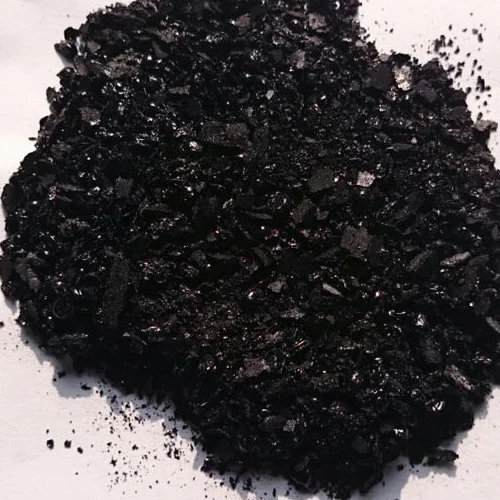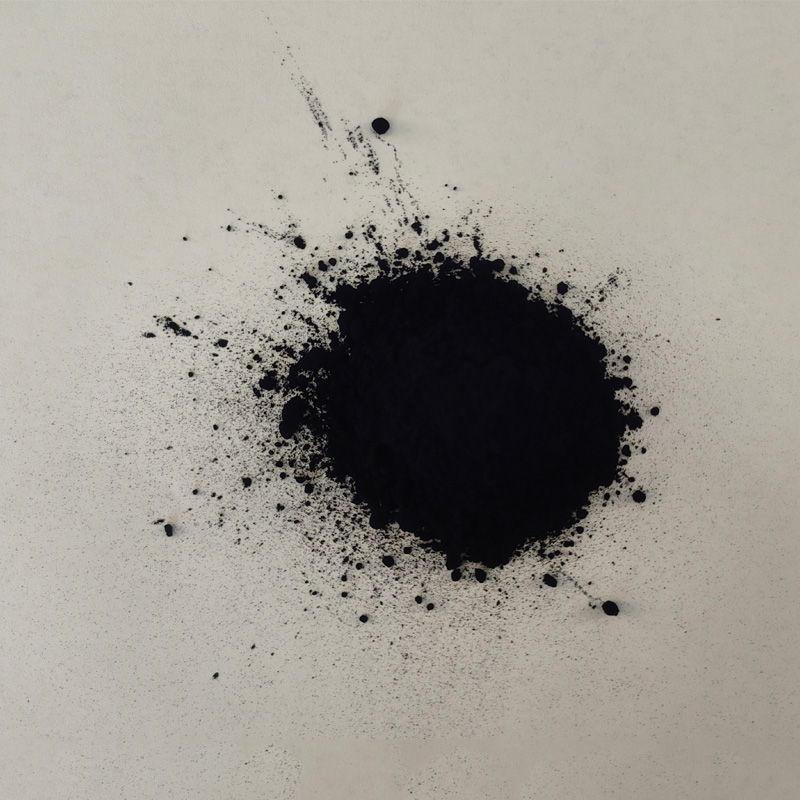Sulphur Black Dyes: Premium Quality for Textile Dyeing
Unlocking Industrial Potential: A Deep Dive into Sulphur Black
In the intricate landscape of industrial chemicals, certain compounds stand out for their ubiquitous presence and indispensable role. Among these, Sulphur Black occupies a pivotal position, particularly within the textile and paper industries. As a synthetic organic dye, its unique chemical properties and cost-effectiveness make it a cornerstone for achieving deep, durable black shades. This comprehensive article aims to dissect the multifaceted aspects of Sulphur Black, exploring its manufacturing intricacies, technical specifications, diverse applications, and the underlying factors driving its market evolution. We delve into the science and strategy behind this vital industrial colorant, providing insights for B2B decision-makers and technical professionals seeking reliable and high-performance solutions.
Manufacturing Process and Quality Assurance
The production of Sulphur Black is a sophisticated chemical process that involves the sulfurization of various organic compounds, primarily dinitrophenol or aniline derivatives. This complex manufacturing journey can be visualized through a multi-stage process flow diagram, starting with raw material preparation. Key materials, often supplied by certified chemical producers, undergo stringent quality checks to ensure purity and consistency. The core manufacturing process involves heating these organic intermediates with sulfur or sodium polysulfide at elevated temperatures, typically ranging from 180°C to 260°C, in a specialized reactor. This process, known as baking or sulfurization, forms the chromophore responsible for the dye's characteristic color.

Following the sulfurization, the crude dye is cooled, ground, and then subjected to a series of purification steps, including washing and filtration, to remove impurities and unreacted raw materials. Finally, the product is dried and standardized to achieve the desired concentration and particle size distribution. Manufacturers adhere strictly to international testing standards such as ISO 9001 for quality management and ISO 14001 for environmental management, ensuring that each batch meets rigorous performance criteria. The typical usage lifespan of textiles dyed with Sulphur Black is comparable to the fabric itself, often exceeding several years, showcasing its remarkable fastness properties. This reliability makes it indispensable in industries like textiles, paper, and leather, where longevity and color stability are paramount. Its inherent resistance to fading under various environmental conditions makes it a sustainable choice, contributing to reduced re-dyeing cycles and overall resource conservation.
Key Technical Specifications of Sulphur Black
Understanding the technical parameters of Sulphur Black is crucial for its effective application and performance optimization across various industrial processes. The dye's quality is characterized by several key metrics, including its strength, shade, solubility, and fastness properties. These parameters directly influence its suitability for specific dyeing applications and its economic viability. For instance, a higher tinting strength means less dye is required to achieve the desired depth of color, leading to cost savings and reduced environmental impact. Solubility, particularly in its reduced leuco form, dictates the ease of application and penetration into fibers. Below is a detailed table outlining typical specifications for common grades of Sulphur Black.
| Parameter | Sulphur Black BR 200% | Sulphur Black BR 150% | Sulphur Black GR 100% |
|---|---|---|---|
| Color Index Name | Sulphur Black 1 | Sulphur Black 1 | Sulphur Black 1 |
| Strength (%) | 200 ± 5 | 150 ± 5 | 100 ± 5 |
| Shade | Reddish Black | Reddish Black | Greenish Black |
| Insoluble Content (%) | ≤ 0.5 | ≤ 1.0 | ≤ 2.0 |
| Moisture Content (%) | ≤ 6.0 | ≤ 7.0 | ≤ 8.0 |
| Light Fastness (Grade) | 5-6 | 5 | 4-5 |
| Wash Fastness (Grade) | 4 | 4 | 3-4 |
These specifications provide a benchmark for quality and performance. Manufacturers often provide detailed Certificates of Analysis (CoA) for each batch, confirming adherence to these parameters. High-grade Sulphur Black, like BR 200%, offers superior tinting strength and fastness, making it suitable for demanding applications requiring robust color retention. The consistent measurement and reporting of these metrics build trust and ensure that customers receive a product precisely tailored to their needs.
Industry Trends and Market Dynamics
The market for Sulphur Black is influenced by several macro and micro-economic factors, including global textile production, environmental regulations, and raw material availability. According to recent market reports, the global sulfur dyes market, of which Sulphur Black is a significant component, is projected to grow at a Compound Annual Growth Rate (CAGR) of approximately 4.5% from 2023 to 2028, driven by increasing demand from emerging economies. Innovations in sustainable dyeing processes, such as improved effluent treatment and reduced chemical consumption, are shaping the future of dye production and application. Manufacturers are increasingly focusing on developing eco-friendly formulations, including low-sulfide or sulfur-free versions, to meet stringent environmental standards and corporate social responsibility goals. This shift reflects a broader industry movement towards greener chemistry and circular economy principles.

Furthermore, the digitalization of supply chains and the adoption of advanced analytics are improving efficiency and transparency in the procurement and distribution of dyes. Companies with robust R&D capabilities and a strong commitment to sustainability are poised to lead the market. The competitive landscape for Sulphur Black sees a mix of large multinational corporations and specialized regional players. Differentiation often comes from product consistency, technical support, and the ability to offer tailored solutions. Long-standing relationships with raw material suppliers and an efficient logistics network are critical for ensuring stable pricing and timely delivery, especially given fluctuating global commodity markets.
Diverse Application Scenarios and Technical Advantages
The primary application of Sulphur Black is in the dyeing of cellulosic fibers, including cotton, viscose rayon, and linen. Its ability to produce deep, uniform black shades with excellent fastness properties against washing, light, and perspiration makes it ideal for workwear, denim, and various cotton garments. Beyond textiles, Sulphur Black also finds extensive use in the paper industry for coloring paper pulp, imparting a dark, consistent hue to products like packaging materials, newsprint, and specialty papers. In the leather industry, it is employed for dyeing leather and hides, offering a durable and rich black finish that withstands wear and tear, contributing to the product's longevity and aesthetic appeal.
The technical advantages of Sulphur Black are manifold. Its cost-effectiveness is a significant draw, offering an economical solution for achieving strong black shades compared to some reactive or vat dyes. Furthermore, it exhibits excellent leveling properties, ensuring even dye uptake and preventing patchiness, which is crucial for large-scale industrial dyeing operations. Its good affinity for cellulosic fibers results in high dye exhaustion rates, minimizing residual dye in effluent and contributing to environmental benefits. The versatility of Sulphur Black, combined with its robust performance, cements its status as a preferred choice for manufacturers seeking reliable and efficient dyeing solutions. Its application in scenarios like continuous dyeing processes for denim allows for high throughput and consistent quality, underscoring its industrial utility and value proposition.
Customization and Partnership Solutions
In a competitive market, the ability to provide customized Sulphur Black solutions is a significant differentiator. Leading manufacturers understand that specific industrial applications may require tailored dye properties, such as altered particle size for better dispersion, enhanced fastness for extreme conditions, or specialized liquid formulations for automated dyeing systems. Through close collaboration with clients, technical teams can develop bespoke formulations that optimize performance for unique machinery or end-product requirements. This often involves pilot-scale testing and iterative adjustments to achieve the precise shade, strength, and environmental profile desired.

Beyond product customization, strategic partnerships with manufacturers offer comprehensive support, including technical assistance, troubleshooting, and supply chain optimization. Reputable suppliers often have dedicated R&D centers and experienced application engineers who can provide on-site guidance, ensuring seamless integration of the dye into existing processes. This level of engagement builds long-term trust and mutual growth, transforming a simple supplier-customer relationship into a collaborative alliance focused on enhancing operational efficiency and product quality. A manufacturer's track record, evidenced by years of service and positive client testimonials, further underscores their reliability and commitment to partnership excellence.
Real-World Application Insights
A prime example of Sulphur Black's effectiveness is in the dyeing of workwear and protective clothing. These garments require exceptional durability and colorfastness to withstand frequent industrial laundering, exposure to harsh chemicals, and prolonged sunlight. Manufacturers supplying these industries rely on high-grade Sulphur Black to ensure garments retain their deep black color and professional appearance throughout their operational life, directly impacting brand image and wearer satisfaction. Another compelling case is its application in the production of denim fabric. The unique shade and wash-down characteristics of denim are often achieved with Sulphur Black, particularly in over-dyeing processes to create a dark, consistent base color that develops distinct fading patterns over time.
For paper manufacturing, a client producing recycled paper products faced challenges achieving a uniform, dark black for packaging materials due to inconsistencies in recycled pulp. By adopting a specialized liquid form of Sulphur Black, they achieved superior dispersion and penetration into the pulp fibers, resulting in a consistent, deep black shade that met their aesthetic and functional requirements while improving overall process efficiency. These examples highlight the versatility and robust performance of Sulphur Black in diverse industrial settings, showcasing its ability to solve complex coloring challenges and contribute to high-quality end products.
Considerations for Manufacturer Comparison
When selecting a Sulphur Black supplier, B2B buyers should evaluate several critical factors beyond just price. Quality consistency is paramount; reputable manufacturers maintain rigorous quality control at every stage, from raw material sourcing to final product packaging, often backed by ISO certifications and comprehensive batch testing. Technical support and R&D capabilities are also crucial, indicating a supplier's ability to offer bespoke solutions, troubleshoot issues, and innovate. A company with a long-standing presence in the industry, demonstrating years of service and experience, often signals reliability and stability.
Furthermore, evaluate their supply chain resilience, including their capacity to manage large orders and deliver consistently within agreed timeframes. Sustainability practices, such as adherence to environmental regulations and efforts to reduce carbon footprint or water usage in production, are increasingly important. Finally, client testimonials and case studies can provide valuable insights into a manufacturer's customer service and product performance in real-world scenarios. A holistic assessment across these dimensions ensures a partnership that delivers both high-quality products and strategic value.
Frequently Asked Questions (FAQ)
- What are the main forms of Sulphur Black available?
Sulphur Black is typically available in powder, granular, and liquid forms. Powder and granular forms are widely used, while liquid forms offer advantages in automated dyeing systems due to easier handling and dispersion. The choice depends on the specific application and dyeing equipment.
- Is Sulphur Black environmentally friendly?
Traditional Sulphur Black can have environmental implications due to sulfide content in wastewater. However, advancements in manufacturing have led to eco-friendly versions, such as low-sulfide or sulfur-free types, which significantly reduce environmental impact. Proper effluent treatment is essential for all applications.
- What are the storage requirements for Sulphur Black?
It should be stored in a cool, dry, and well-ventilated area, away from direct sunlight, moisture, and strong oxidizing agents. Proper sealing of container111s is crucial to prevent caking and maintain product integrity.
- Can Sulphur Black be used on synthetic fibers?
While primarily used for cellulosic fibers, Sulphur Black generally has poor affinity for synthetic fibers like polyester or nylon. Specialized dyes are recommended for such materials.
Quality Assurance, Delivery, and Customer Support
Reliable manufacturers of Sulphur Black prioritize stringent quality assurance protocols, often adhering to ISO 9001 and other relevant industry certifications. Each batch undergoes comprehensive testing to ensure it meets published specifications for strength, shade, fastness, and purity. This commitment to quality minimizes production issues for clients and ensures consistent end-product performance. Regarding delivery, efficient logistics and supply chain management are critical. Leading suppliers typically offer various packaging options and can accommodate specific shipping requirements, ensuring timely and secure delivery globally.
Standard delivery cycles for bulk orders typically range from 7 to 21 business days, depending on destination and customization. Post-sales, robust customer support is indispensable. This includes technical assistance for application queries, troubleshooting, and immediate response to any quality concerns. A comprehensive warranty, typically covering product quality for a defined period (e.g., 12 months from delivery), provides further assurance and reflects the manufacturer's confidence in their product. This holistic support system underscores a commitment to long-term client satisfaction and partnership.
References
- Clark, M. "Dyeing of Textile Materials." Journal of Textile Research, Vol. 45, No. 3, 2019.
- Environmental Protection Agency (EPA). "Guidance for Reducing Sulfur Dioxide Emissions." Technical Report Series, 2021.
- International Organization for Standardization (ISO). "ISO 9001: Quality Management Systems – Requirements." Standard Document, 2015.
-
The Timeless Art of Denim Indigo Dye
NewsJul.01,2025
-
The Rise of Sulfur Dyed Denim
NewsJul.01,2025
-
The Rich Revival of the Best Indigo Dye
NewsJul.01,2025
-
The Enduring Strength of Sulphur Black
NewsJul.01,2025
-
The Ancient Art of Chinese Indigo Dye
NewsJul.01,2025
-
Industry Power of Indigo
NewsJul.01,2025
-
Black Sulfur is Leading the Next Wave
NewsJul.01,2025

Sulphur Black
1.Name: sulphur black; Sulfur Black; Sulphur Black 1;
2.Structure formula:
3.Molecule formula: C6H4N2O5
4.CAS No.: 1326-82-5
5.HS code: 32041911
6.Product specification:Appearance:black phosphorus flakes; black liquid

Bromo Indigo; Vat Bromo-Indigo; C.I.Vat Blue 5
1.Name: Bromo indigo; Vat bromo-indigo; C.I.Vat blue 5;
2.Structure formula:
3.Molecule formula: C16H6Br4N2O2
4.CAS No.: 2475-31-2
5.HS code: 3204151000 6.Major usage and instruction: Be mainly used to dye cotton fabrics.

Indigo Blue Vat Blue
1.Name: indigo blue,vat blue 1,
2.Structure formula:
3.Molecule formula: C16H10N2O2
4.. CAS No.: 482-89-3
5.Molecule weight: 262.62
6.HS code: 3204151000
7.Major usage and instruction: Be mainly used to dye cotton fabrics.

